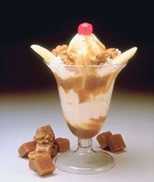Examples:
1. Activities: roll a die and flip a coin
There are 6 ways to roll a die and 2 ways to flip a coin.
There are 6 • 2 = 12 ways to roll a die and flip a coin.
(The sample space will contain a count of 12 possible outcomes.)
2. Activities: draw a card from a deck of 52 cards, replace it, draw another card.
There are 52 ways to draw the first card.
There are 52 ways to draw the second card.
There are 52 • 52 = 2,704 ways to draw the two cards.
(The sample space will contain a count of 2,704 possible outcomes.)
Would not want to make a list or draw a tree diagram for this problem!!!!
The Counting Principle also works for more than two activities.
3. Activities: a coin is tossed five times
There are 2 ways to flip each coin.
There are 2 • 2 • 2 • 2 •2 = 32 arrangements of heads and tails.
(The sample space will contain a count of 32 possible outcomes.)
4. Activities: a die is rolled four times
There are 6 ways to roll each die.
There are 6 • 6 • 6 • 6 = 1,296 possible outcomes.
(The sample space will contain a count of 1,296 possible outcomes.) |



